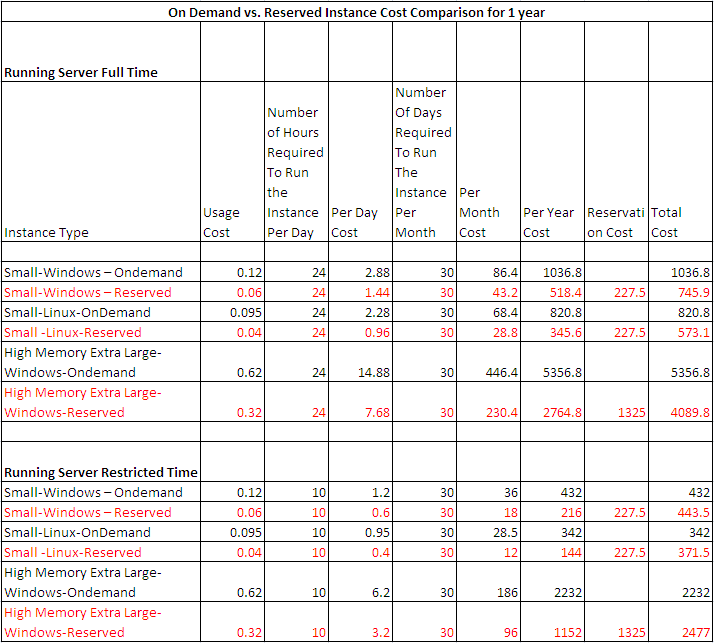Many would know that Amazon is one of the leading IaaS providers and they offer different configurations of server Instances such as Linux, Windows – Small, Medium, Large and so on. This is most common with IaaS providers. What is more interesting in Amazon EC2 are the different usage based instance types they offer.
They offer totally 3 instance types. In this blog we will look at two of the instance types “On-Demand” and “Reserved instances” and compare their price difference
On-Demand Instances: This lets you pay for compute capacity by the hour with no long-term commitments. This frees you from the costs and complexities of planning, purchasing, and maintaining hardware and transforms what are commonly large fixed costs into much smaller variable costs.
Reserved Instances: This gives you the option to make a low, one-time payment for each instance you want to reserve and in turn receive a significant discount on the hourly usage charge for that instance. If you know for sure that you want to use the instance for a long period you pay it once and reserve it. Then you pay for what you use with a discounted rate per instance. You need to do your math to compare the difference in price you are getting compared to your on demand instance here especially if you do not need to run your instance continuously the entire period.
I have given a price comparison below for two kinds of scenario – 1) running an instance throughout the day and 2) when you run it only for business hours.
*All costs are in USD
You can see that the equation completely changes if your requirement is to run the instance only for certain period of time. Similarly you can change the various parameters and find out the price advantages before you chose an instance usage mode.
The other instance type offered by Amazon EC2 is called “Spot Instances”. This is a very interesting instance type. This is similar to shares in stock market. Spot instances enable you to bid for unused Amazon EC2 capacity and the instances are charged as per the Spot Price, which is set by Amazon EC2 and fluctuates periodically depending on the demand for Spot Instance capacity.
We will discuss this in detail in the next blog and see its pros and cons and also look at the cases where we can benefit from this.
- Top 10 NFR in Software Architecture – Part 1 - December 1, 2022
- Top 10 Critical NFR for SaaS Applications – Part 2 - October 20, 2022
- Why enterprises should standardize Digital Application Management - July 17, 2017







Comments